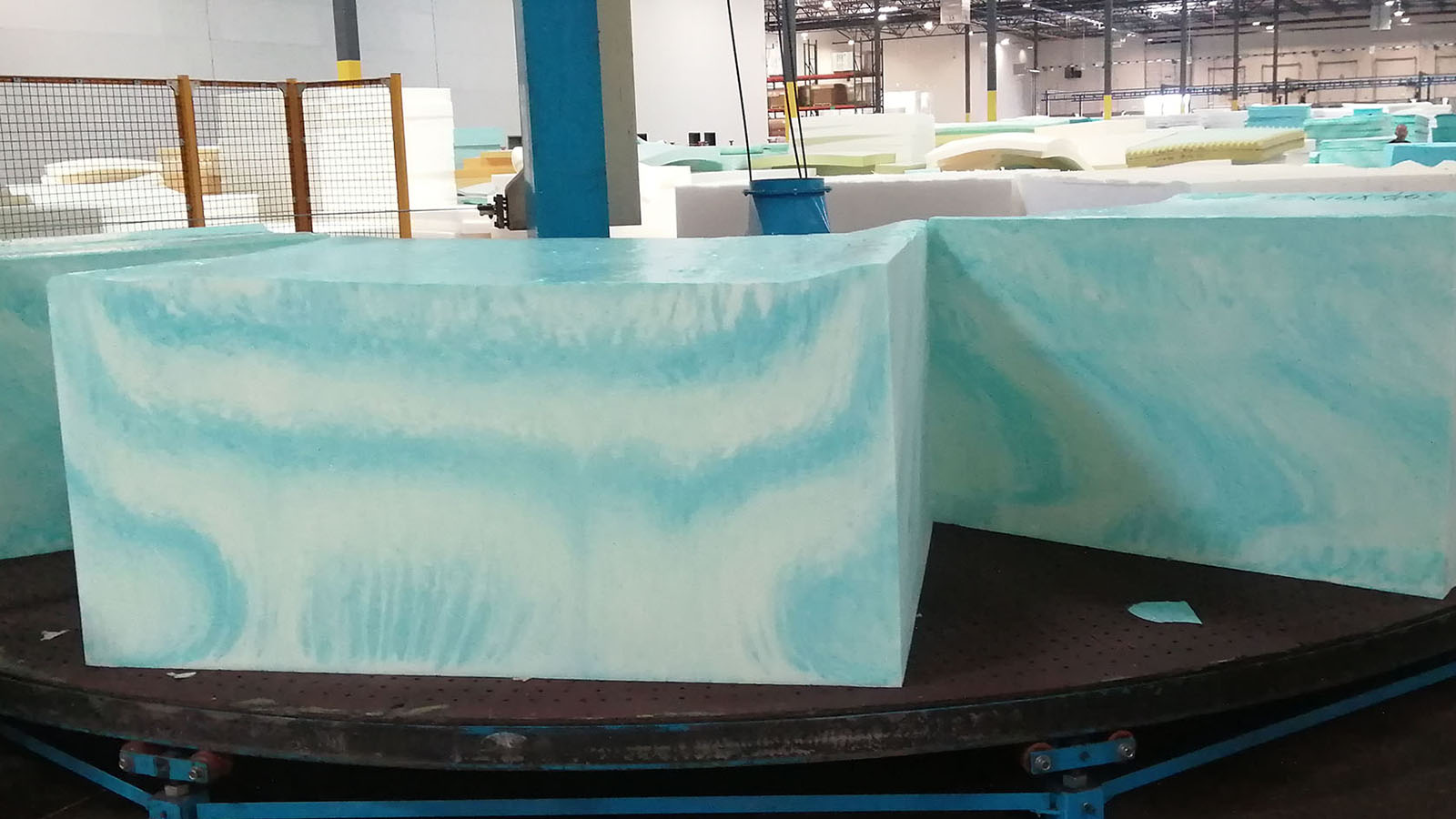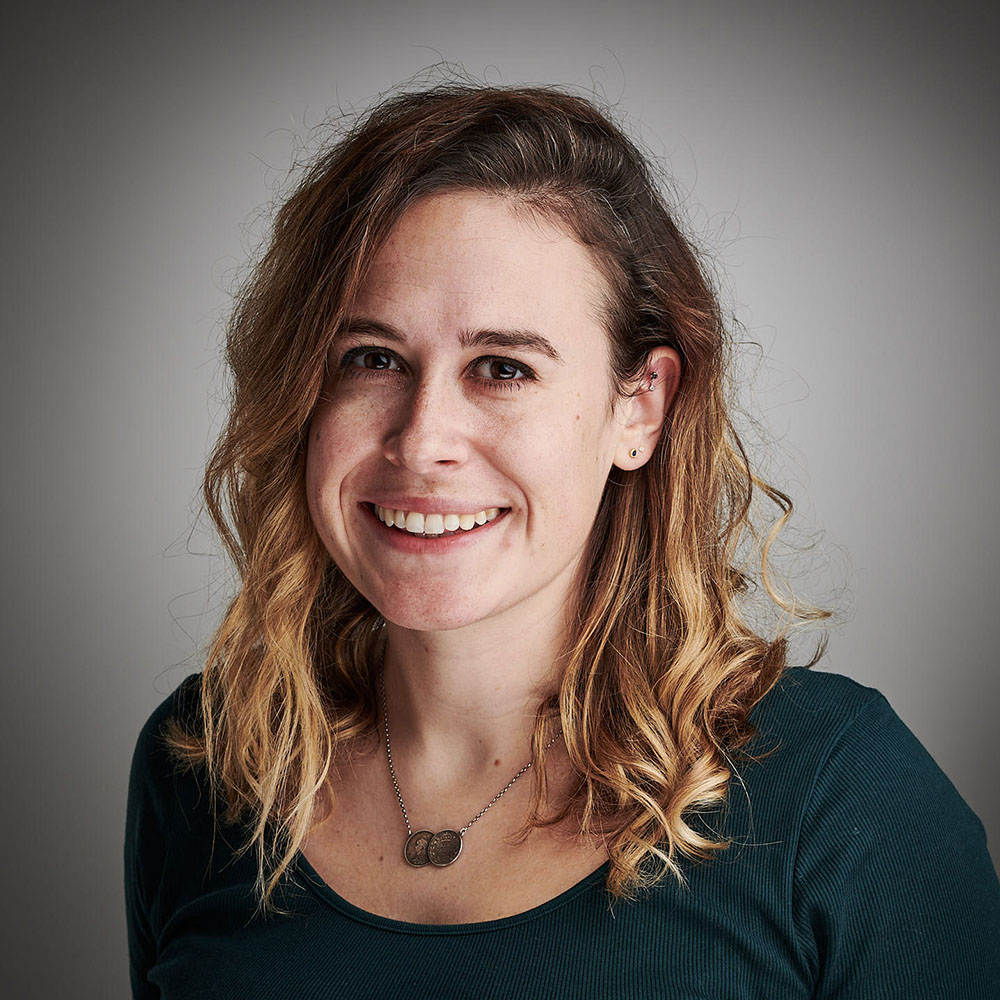All your biggest memory foam questions answered
What is memory foam actually made from? Should it be springy or sinky? What does open cell mean? We asked an expert

It has been around a while now, but memory foam continues its reign as one of the most popular mattress materials. It appears in most of the models in our best mattress ranking. I've been writing about mattresses for three years now, and recently had the opportunity to take a tour of the 3Z factory, and see how mattresses from brands like Helix, Brooklyn Bedding, Nolah, Bear, and Leesa are put together.
I also had a chance to pick the brains of Tim Dilworth, a retail and manufacturing executive with 6 years' experience in the industry, and who knows everything there is to know about mattress-making.
If you're in the market for a new bed and think this is the right option for you, head to our roundup of the best memory foam mattresses for our top picks, all of which we've tested ourselves. Alternatively, read on for an explainer of all things memory foam.
1. What is memory foam made from?
"Most mattress foam is made from a variety of chemicals that basically, start in liquid form for the most part, get combined. A chemical reaction takes place and the foam manifests out of that," explains Tim.
What are those chemicals? "Most of them are petroleum based. So polyurethane and derivatives from that are your biggest component. But, you know, it's petroleum based. So it's a little bit of a dirty secret, but it is what it is. We would all be surprised what we live with comes from petroleum in our everyday lives."
2. What weight should mattress foam be?
When looking for a good quality, durable mattress, the spec you want to focus on is the foam density. That's the amount of raw material going into your foam, and it's measured in pounds. Denser foams are more expensive, better quality and more durable than less-dense foams. Note that firmness is a separate issue: you can have 3lb firm foams, and you can have 3lb soft foams.
For the comfort (upper) layer of your mattress, these are the densities to look for:
3-4lb foam – Overkill
2.5lb foam – Ideal
1.8lb foam – Acceptable
1.5lb foam – Minimum
Where you want to pay attention to this metric is in the upper, softer layers of foam on a mattress. The density of foam on a firm lower layer isn't so important, because you're not really going to be able to feel it.
For mattresses in the mid-range category or higher, ideally you want to look for a mattress that has a significant layer of 2.5lb foam as its comfort (upper) layer. "For us, 2.5lb is a real nice, dense foam to work with. It's going to have really great durability and provide a great feel in combination with the other layers of the bed," says Tim.
If you're shopping in the luxury mattress category, you might come across 3lb or 4lb foams. According to Tim, these might be marginally more comfortable, but the difference in comfort is likely to be marginal, and probably not worth the hike in price. At the other end of the scale, if you're on a tight budget, a density of 1.8lb is acceptable for a cheap mattress, or 1.5lb at an absolute minimum. Less than that, and it's unlikely to be very durable.
Get instant access to breaking news, the hottest reviews, great deals and helpful tips.
An exception to this is a foam that's used in a pillow-top, as this needs to be less dense to allow for it to go through the quilting machine.
3. Is springy foam lower quality?
"There's nothing inferior about fast-response foam, it just feels a little bit different," says Tim. "We've found that some sleepers like that feeling of memory foam where the bed is really conforming to you, and you're feeling really supported. And some people feel sort of trapped by that, and want their bed to be more active and responsive. Neither are good or bad. In my mind, it's just a personal preference."
You can see an example of a slow-moving foam in the video below – this is a giant block of foam, ready to be sliced up and added into mattresses, and you can see how long it takes to expand back into shape once pressure is removed.
A good real-world example of the springy versus sink-in discussion is within Helix's mattress range. This brand makes a selection of mattresses for those who like to lie on their sides (for example, the Helix Midnight, which sits at the top of our best mattress for side sleepers ranking), as well as a range of mattresses for front/back sleepers.
The side-lie models all have upper layers of slow-moving memory foam, which molds to the sleeper's shape and provides cradling around the hips and shoulders in this position. The front/back sleeper models swap out the sink-in memory foam for a layer of bouncier foam, referred to here as a 'latex-alternative'. It provides similar cushioning, but springs back into shape much faster once pressure is removed.
4. Is open-cell foam better for mattresses?
You'll often come across the term 'open cell' in relation to foams, alongside claims that this means the foam is cooler and more breathable. In fact, this is a bit deceptive.
"All [mattress foams] are open cell technology," says Tim. "If you buy an expensive product, and it comes cased in that really hard foam in a box, that would be closed cell foam. So nobody uses that in beds. I shouldn't say nobody, right? You might, you might find it under a spring for support or something. But nobody wants to sleep on a closed cell foam. So it's a little bit of a misnomer in my mind."
5. What defines a memory foam?
Mattresses feature layers of different kinds of foam. A memory foam mattress won't be just one big block of memory foam – it'd be absolutely horrible to sleep on, for one thing. Tim explains that the different types of foam have different formulas, and memory foam in particular uses a chemical called MDI as part of its formulation. This reacts with the polyols (the polyurethane derivatives) to give the foam a different feel. It's part of what's responsible for giving a foam its viscoelastic properties.
It's a bit more complicated than that though, because you can get all different kinds of foams that contain MDI. "From a consumer standpoint, when we think of memory foam, we think of foam that has a slower response, meaning when you lay down into it, it recovers much more slowly, and it molds to your body," says Tim. "That being said, you can use the same chemicals and make a fast-response memory foam that has lots of those same cradling and supportive qualities. It just recovers faster."

In order to make things simpler for shoppers, many brands will reserve the term 'memory foam' for that slow-moving foam, cradling foam, and call their fast-response foam something else.
In fact, a lot of it comes down to branding decisions rather than hard-and-fast definitions. For example, Tempur-Pedic uses what I would describe as almost the quintessential memory foam, but on its site the brand is adamant that this is not memory foam, but 'Tempur Material'. This might be to do with negative connotations that have come to be associated with memory foam – that it can trap body heat, for example – or a bid to help distinguish a brand from its competitors.
6. What are the different types of foam?
Naming conventions are a bit lacking in standardization across the mattress world. However, there are broad categories of foam to look for. Within those categories, different properties can be accentuated – breathability, softness, responsiveness and so on.
Here's a quick guide to the different categories of foam you can expect to see if your mattress, or for a more detailed explanation, head to our mattress foam types jargon-buster.
| Category | Properties | Where used |
|---|---|---|
| Memory foam | Dense, slow-response | Upper comfort layers |
| Fast-response foam | Dense, fast-response | Upper comfort layers |
| Latex foam | Gives a weightless feel, fast-response, can be synthetic, natural, or a blend | Upper comfort layers, sometimes also base layers |
| Base foam | Lower quality, less luxurious, functional foam | Base layers, transition layers |
7. What are pillow-tops made from?
Often, mattress pillow-tops will also be made from foam. They're made by sandwiching this foam between a top cover fabric and a fire-retardant fabric, and running it all through a quilting machine. So that it can fit through the quilting machine, these foams will be less dense than other foam layers found elsewhere in the mattress – 1.2 or 1.3lb.
Not all pillow-tops are made from foam – you will sometimes find ones made from wool or other fibers. I also discovered during my trip that pillow-tops aren't separate from the rest of the mattress, as I'd always assumed.
8. What happens to the foam offcuts?
This might not be the case everywhere, but at the 3Z factory, foam offcuts ended up being shredded up and turned into carpet underlay.
9. Do different brands actually use different foams?
The factory I visited makes all of 3Z Brands' mattresses, but also sub-contracts to a number of other brands, and the impression I got during my tour is that there's certainly a decent amount of crossover with the raw materials going into different brands' beds (i.e. there were plenty of foams being used in a number of different brands' beds). The relative amounts, and the order in which they appear, varies model to model, leading to very different sleep feels though.

Ruth is currently Homes Editor on Tom's Guide's sister site TechRadar, where she reviews and writes about everything from air fryers to vacuum cleaners to coffee machines, as well as the latest smart home gadgets. Prior to making the shift to Homes, Ruth was Tom's Guide's Sleep Editor. A certified Sleep Science Coach, she has tested more mattresses than her small flat can handle and will talk at length about them to anyone who shows even a passing interest.

